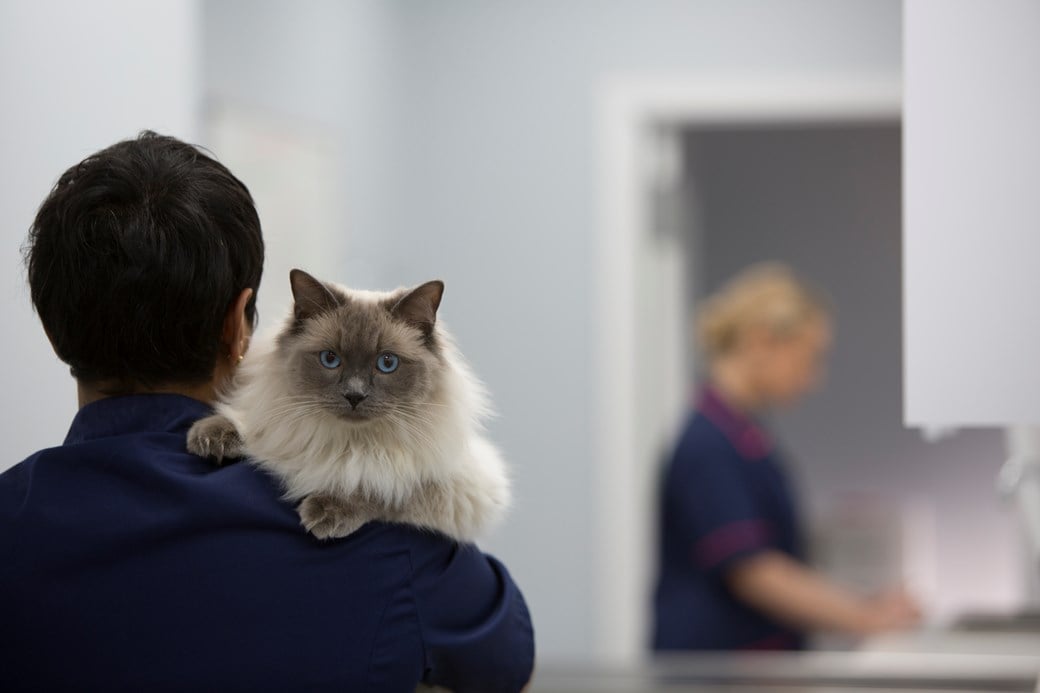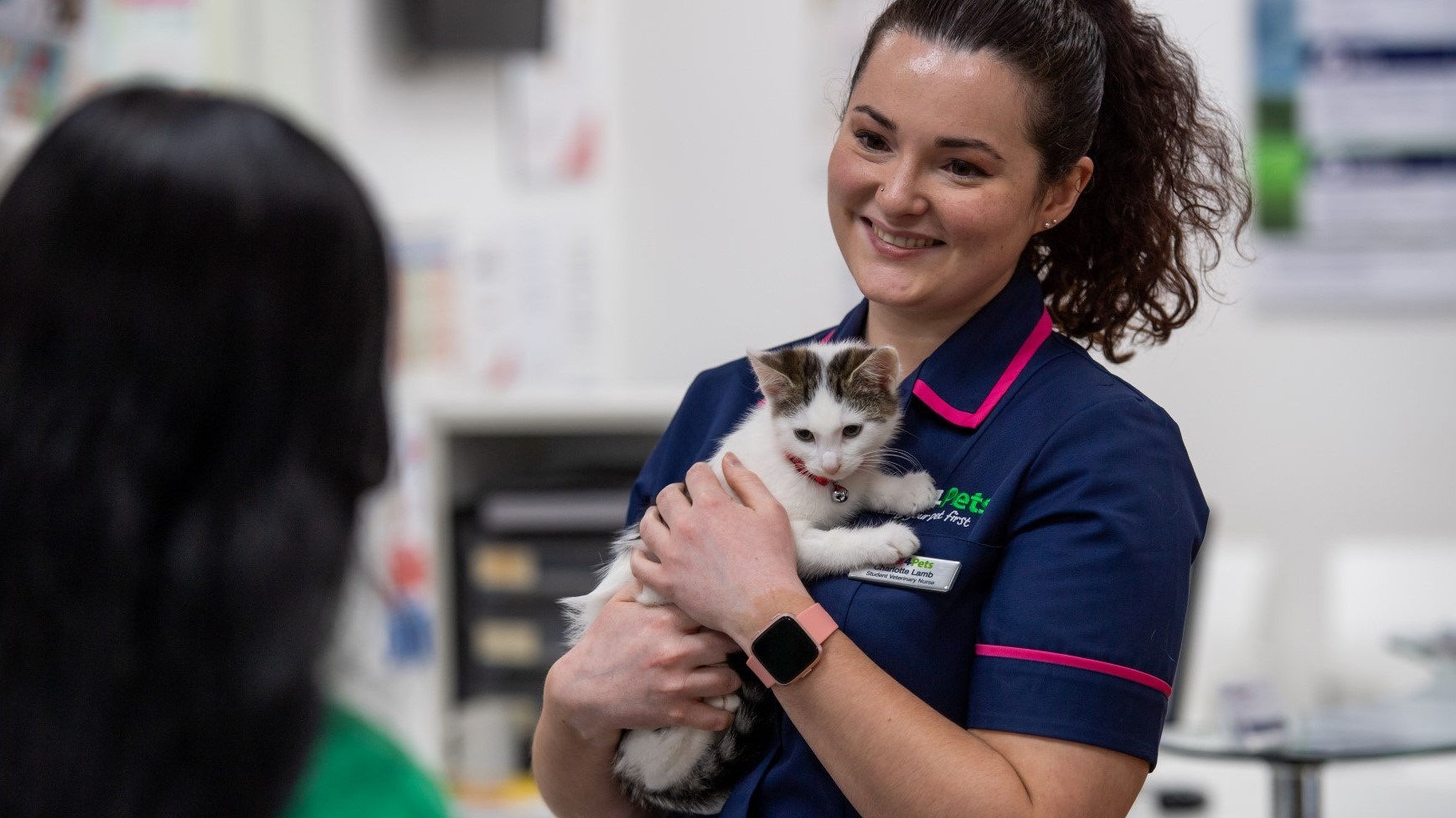
Ringworm in cats
This common fungal infection can be uncomfortable and itchy for your beloved household pet - learn about the symptoms and how to treat ringworm in cats.
Did you know that ringworm is an infectious fungal disease that has nothing to do with worms at all? It can affect all kinds of animals, including cats, dogs, guinea pigs and humans and you can catch it from your pets.
The symptoms can vary in different species, so what should you be looking out for and what should you do if you’re suspicious your cat may have ringworm?
What is ringworm in cats?
Did you know that ringworm is an infectious fungal disease that has nothing to do with worms at all?
Also known as dermatophytosis, ringworm is a skin disease caused by a type of fungus called a dermatophyte. There are many different types of dermatophytes and all colonise and feed on skin, hair and nails. In cats, almost all cases involve a species called Microsporum canis.
How do cats catch ringworm?
Contact with infectious particles on furniture, on grooming tools, or by direct contact with an infected animal can result in infection, particularly if the skin is already scratched or damaged. These particles can survive for around 18 months in the environment, usually attached to fragments of broken hairs.
Whether or not a cat becomes infected also depends partly upon the cat’s general health and immune system, their age and nutrition. Kittens and cats under a year old seem to be more susceptible to infection, perhaps because their immune systems are still developing and their skin is not yet a strong barrier. Long-haired cats also appear more likely to catch ringworm and this could be because it’s more difficult for them to remove spores from their coats by grooming.
What are the symptoms of ringworm in cats?
Dermatophytes feed on dead skin and nail tissue and on hairs, causing hair breakage and scaly, crusty skin. There’s a wide range of severity of symptoms with ringworm, and some cats even appear completely normal. Many infected cats develop bald patches, normally on their face and ears, feet or tail. These are often circular and they may have a classic ‘ring’ appearance, with broken hairs around the edges of the lesion and a scaly or pinkish centre. Occasionally, symmetrical bald patches appear on both sides of a cat’s body. Sometimes, infected cats get a ‘rash’ of raised, itchy bumps, which we call miliary dermatitis. In severely affected cats, the bumps can turn into large, open sores.
Other conditions can resemble ringworm infection, so it’s important to contact your vet if you’re concerned that your cat is itchy or has any unusual changes to their coat, nails or skin.
How is ringworm in cats diagnosed?
Your vet will examine your cat thoroughly from nose to tail. They’ll examine the hair, nails and skin in detail and specific ringworm tests can then be performed. A special type of ultraviolet lamp, called a Wood’s lamp, can identify some cases of ringworm. This test isn’t always reliable, as certain other substances can cause fluorescence, but it’s still useful because it can raise suspicion in a possible case.
Your vet can also perform lab tests to try to rule ringworm in or out. This test is often sent out to an external laboratory, where specialist pathologists are used to identify fungal elements.
If your vet is suspicious that your cat may have ringworm, they can find out for certain by placing a sample of hair and skin scrapings from the lesions into a special fungal culture test kit. This is the most reliable way to diagnose ringworm.
Cat ringworm FAQs
Although most ringworm infections eventually resolve without treatment, it is always advisable to treat an affected cat. Not only is dermatophytosis very contagious between cats and other species, but it is also an important zoonotic disease, which means it can be passed on to humans.
If a cat is diagnosed with ringworm, any other cats in the household will need to be checked and have a fungal culture test, because infected cats can be asymptomatic. Your vet may also advise you to separate infected cats from healthy ones, temporarily.
There are two types of treatment for ringworm: systemic anti-fungal treatment, which is given by mouth as liquid or tablets; and topical treatment, which is applied to the coat and skin. It’s usually necessary to use combination therapy since topical treatment alone isn’t very effective.
Many cats don’t enjoy getting wet, so shampooing your cat or applying anti-fungal rinses may not always be easy to do. However, shampoos containing the two active ingredients - miconazole and chlorhexidine - have been shown to be helpful in treating cats with ringworm.
In humans, creams are often used to treat fungal infections. While these could be useful in cats with small ringworm lesions, cats don’t like having creams on their skin and usually lick them off. This can be a problem with medications that must not be taken internally, and of course it prevents them from working.
Ringworm is an important zoonotic disease, meaning it can be passed readily between animals and people. For this reason, it is important that cats with ringworm are correctly and promptly diagnosed, then receive effective treatment. This gives them the best chance of recovering as quickly as possible, while reducing the risk of spreading the disease to other members of the household.
The medications that are effective against ringworm in cats are only available on prescription. Some may be unsuitable for certain cats. Also, laboratory monitoring for adverse effects, as well as for clinical resolution, may be required during treatment.
Home treatment of cats with ringworm isn’t advisable. Correct diagnosis, treatment and environmental decontamination are all needed to get the best outcome.
To reduce the risk of people and other pets becoming infected, you’ll need to take action in your home and anywhere else your cat goes.
Frequent vacuuming and disinfecting – even after your cat is cured – are important ways to reduce the number of infectious spores in the environment. Wipe down all surfaces that can’t be vacuumed using a cleaning product that lists fungicidal properties on its packaging. You’ll need to throw away vacuum bags afterwards and dispose of or bleach used cloths. Wash and disinfect all bedding and disinfect any equipment you use for your cat, such as grooming brushes. Your vet team can advise you on what to use if you aren’t sure.
Ringworm, or dermatophytosis, is a zoonotic disease. This means you can catch it from your cat. If your cat is diagnosed with ringworm, it’s important to let your doctor know about that if any members of the human family also develop any lesions on their skin, even if those don’t resemble the ones on your cat.
Tell your vet about any skin problems affecting people in your household if you take your cat to see them with a skin problem, including itchiness.
Health Plans to keep your cat healthy
At Vets4Pets we offer a range of Health Plans that make essential routine treatments more affordable. You'll save money on things like annual vaccinations, flea and worm treatment and routine health check-ups.

Cat Advice
Read more of our expert cat advice to keep your cat happy and healthy.
